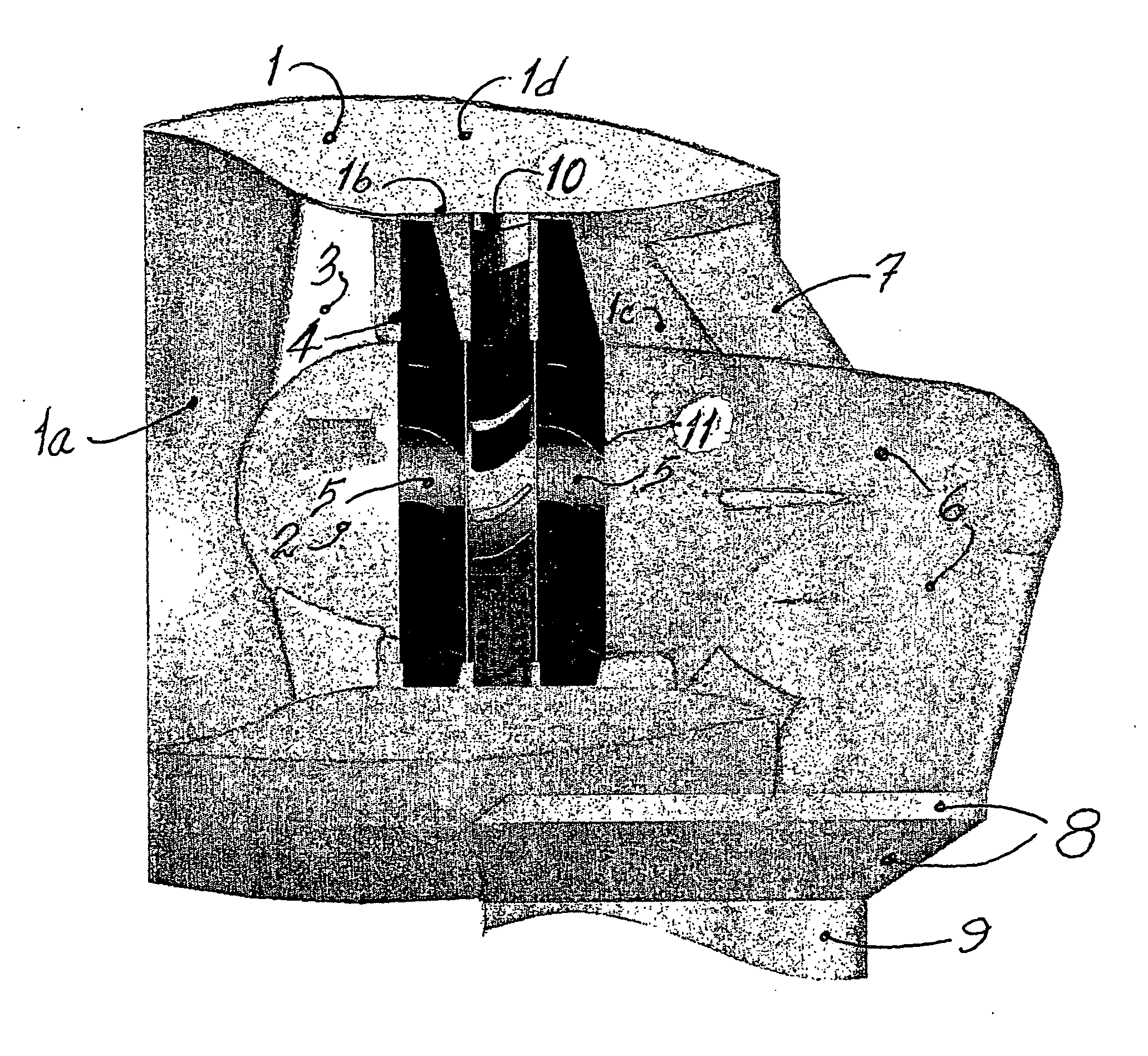Wind powered turbine engine
a wind turbine and engine technology, applied in the direction of wind turbines, machines/engines, mechanical equipment, etc., can solve the problems of no longer profitable systems, achieve the effects of increasing the velocity of redirected wind energy, maximizing the cross section of energy, and increasing the available energy
- Summary
- Abstract
- Description
- Claims
- Application Information
AI Technical Summary
Benefits of technology
Problems solved by technology
Method used
Image
Examples
Embodiment Construction
[0016]FIG. 1 is a partially cut away side view of a preferred embodiment of the invention, as mounted on the rotatable top of its support tower platform, with turbine rotor and twelve turbine blades, and with its wind intake scoop cross section cut away to show the rotor and turbine blades. Other details, being mechanical in nature, would be present state of the art, and do not need to be shown to illustrate the essential principles, details and novelty of the inventive concept.
[0017]FIG. 2 is a frontal view of the same wind turbine engine embodiment, as mounted on its rotatable tower top, illustrating its wind capture area, wind intake scoop, turbine blades, and airfoil covered support and reinforcement members for the wind intake scoop and internalized axle and drive system.
[0018]FIG. 3 is a rear view of the same wind turbine engine on top of its tower mounting, as it would look directly from the rear.
[0019]FIG. 4 is a side view of the wind turbine engine, on top of its tower m...
PUM
 Login to View More
Login to View More Abstract
Description
Claims
Application Information
 Login to View More
Login to View More - R&D
- Intellectual Property
- Life Sciences
- Materials
- Tech Scout
- Unparalleled Data Quality
- Higher Quality Content
- 60% Fewer Hallucinations
Browse by: Latest US Patents, China's latest patents, Technical Efficacy Thesaurus, Application Domain, Technology Topic, Popular Technical Reports.
© 2025 PatSnap. All rights reserved.Legal|Privacy policy|Modern Slavery Act Transparency Statement|Sitemap|About US| Contact US: help@patsnap.com



